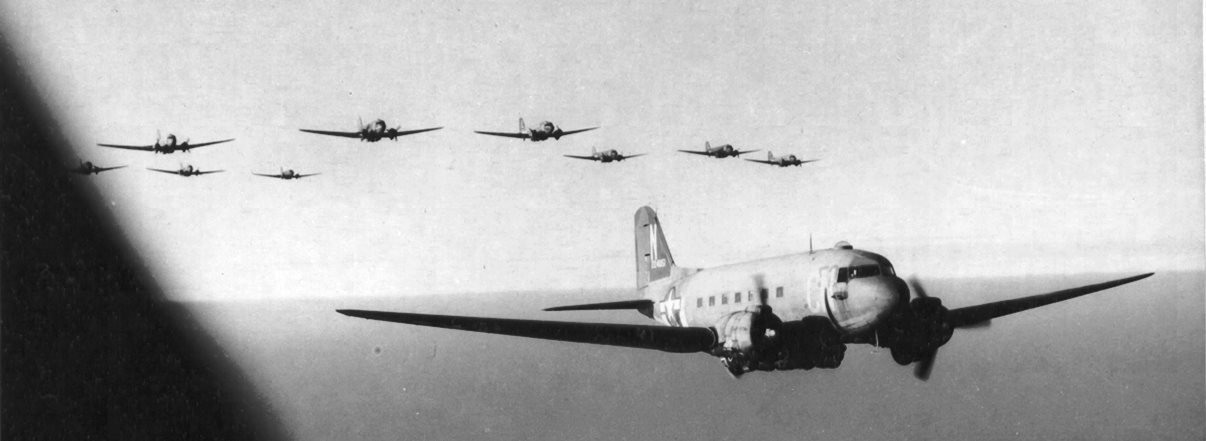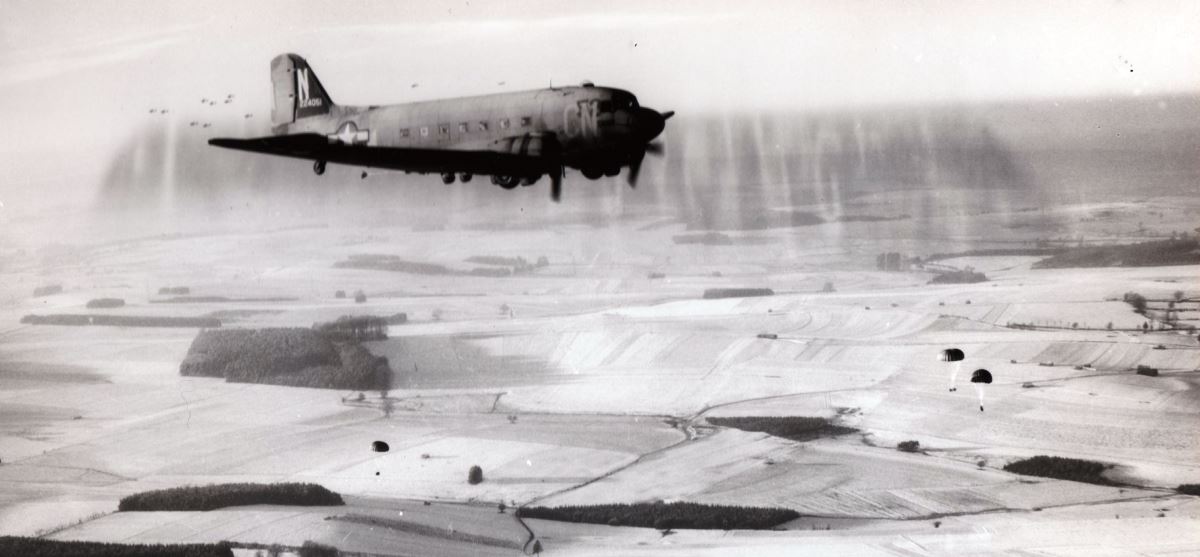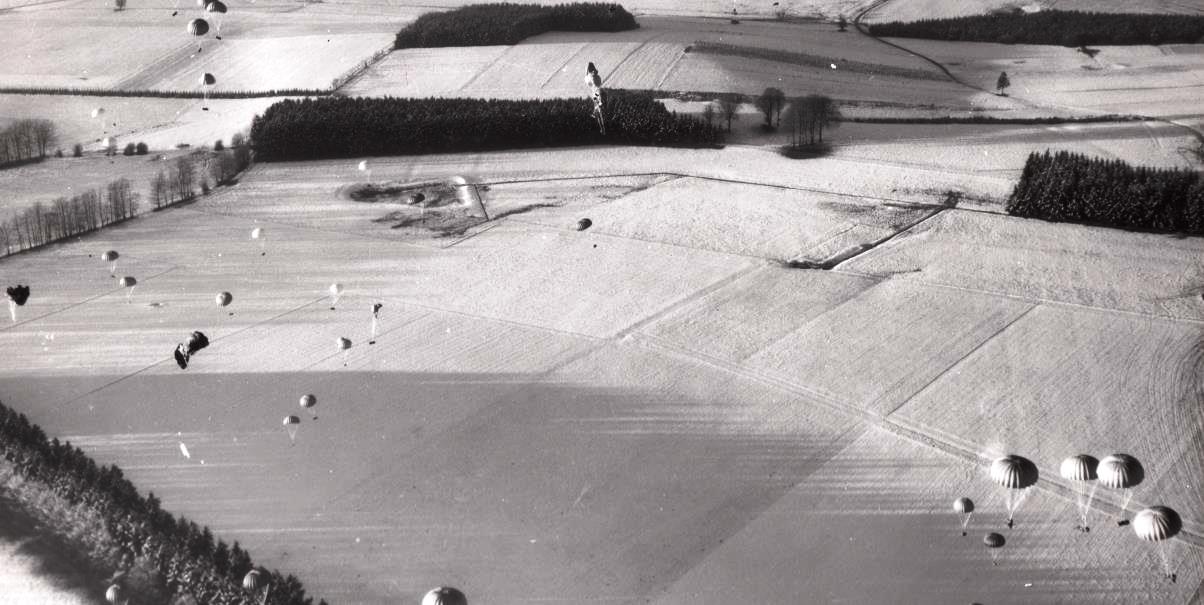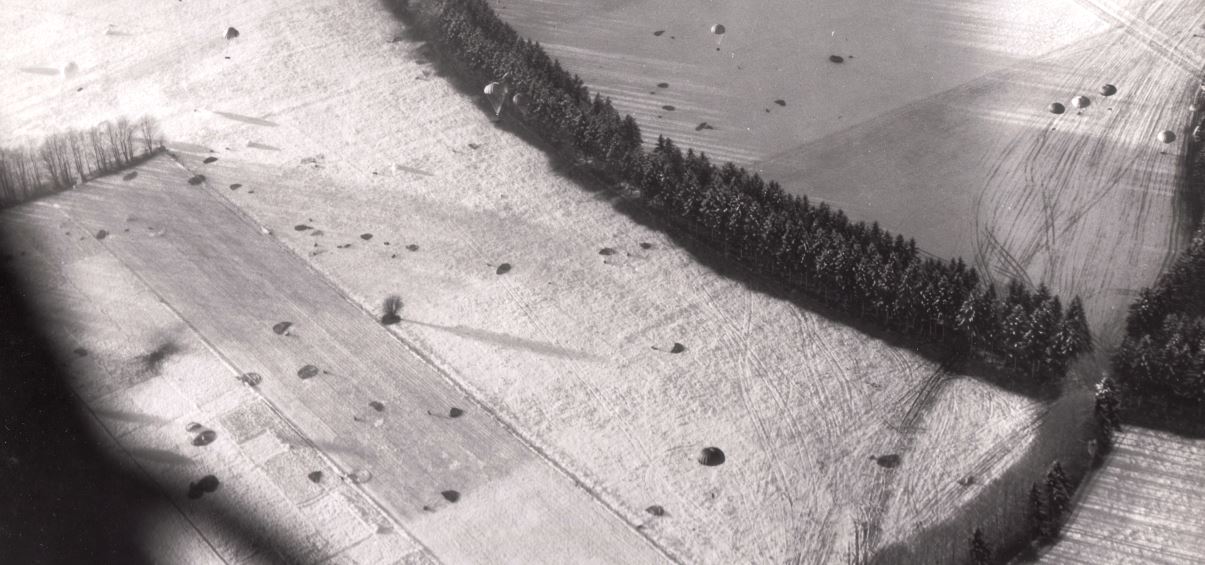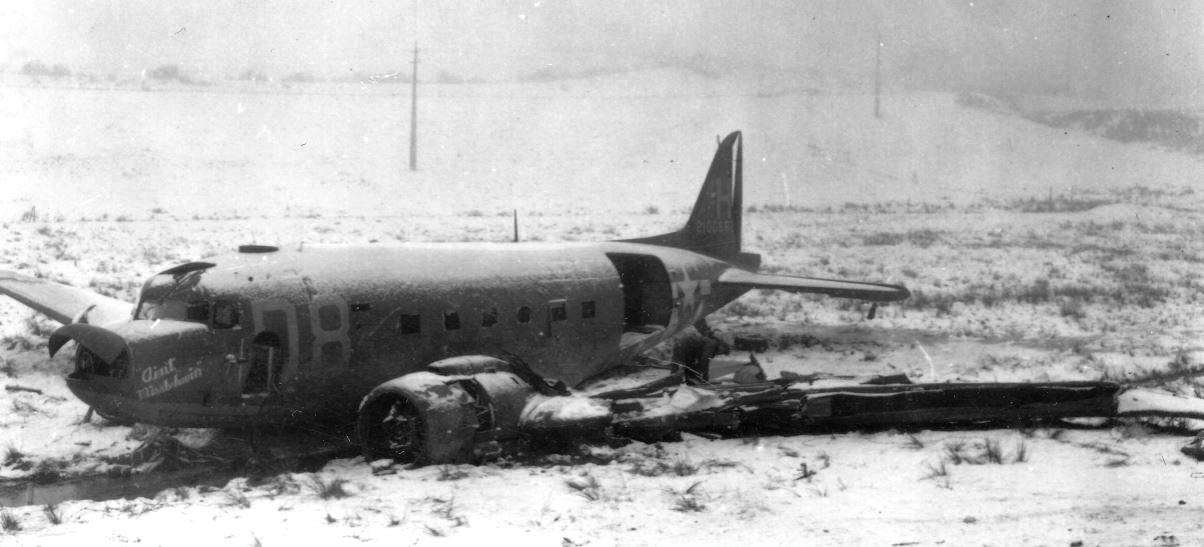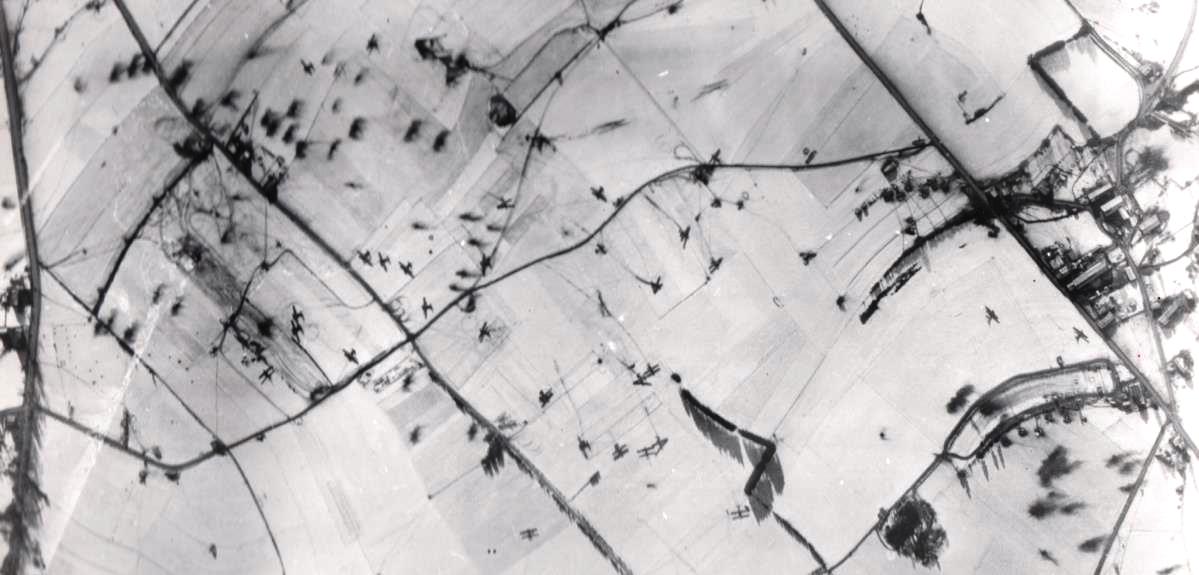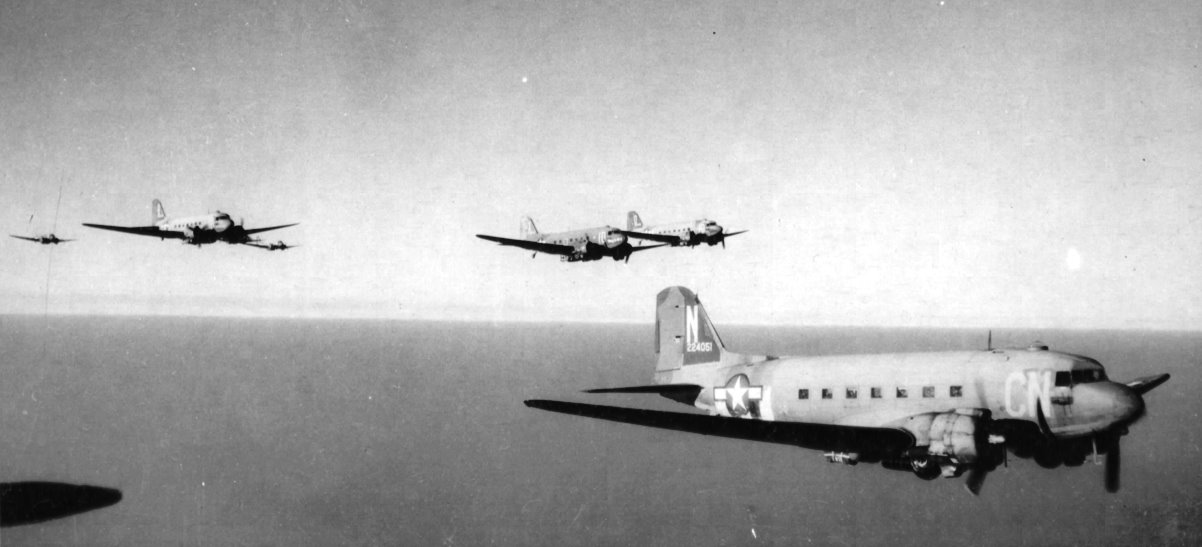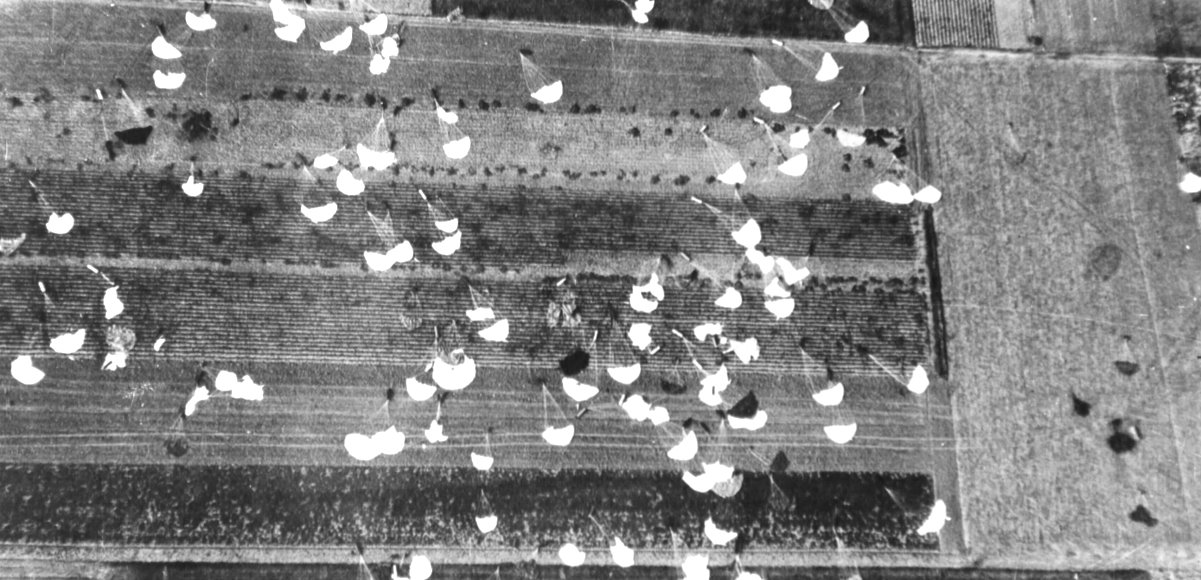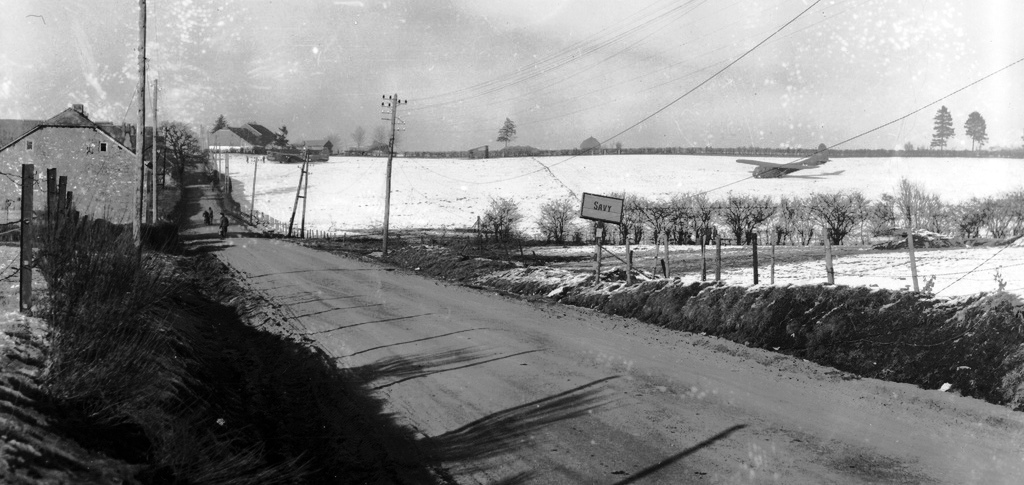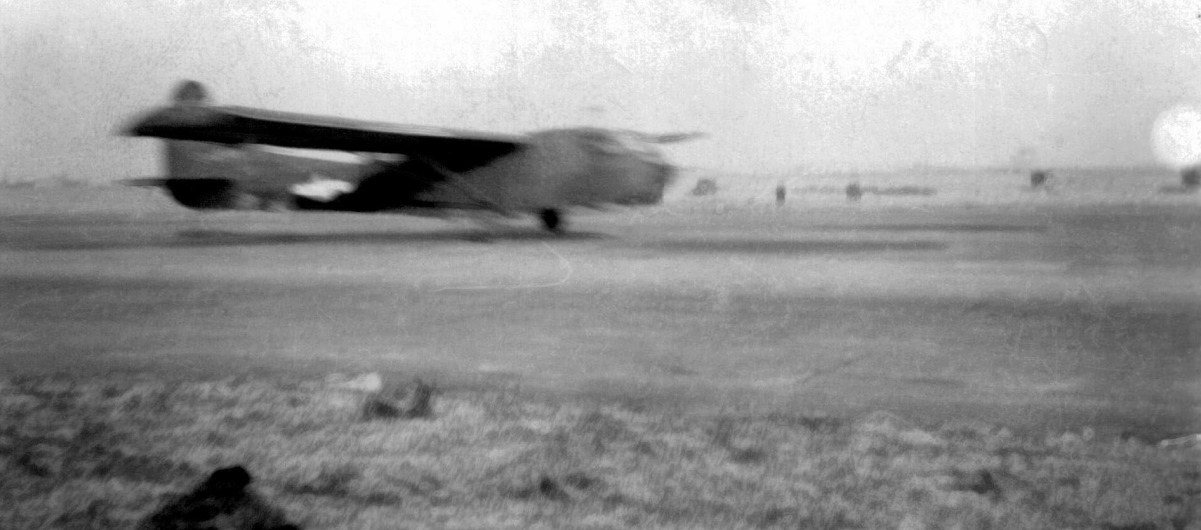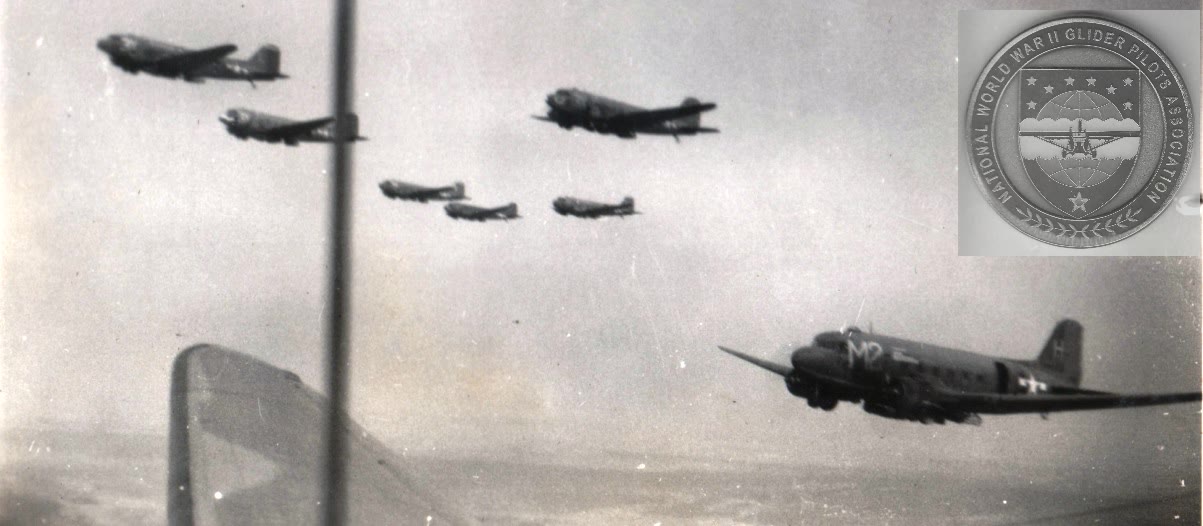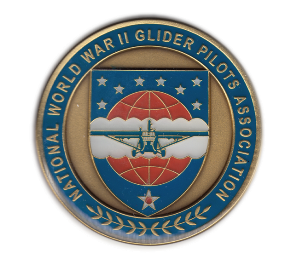National WWII Glider Pilots AssociationLegacy Organization of veterans National WWII Glider Pilots Association. Discover our History, Preserve our Legacy | ||
440TH TROOP CARRIER GROUP APO 133, U S ARMY |
SERIALS
50 GLIDERS SERIAL
GLIDER PILOT NARRATIVES
The SITUATION
23-24 Dec. Bundles From The Sky
26-27 Dec. Gliders
27 Dec. The Final Drop
the Murder of Lt. Epstein
Harold Russell’s Escape
Headquarters, 440th Report 1944
AMERICAN GLIDER PILOTS INVOLVED IN THE ARDENNES (BASTOGNE PULSE AND REPULSE) OP.
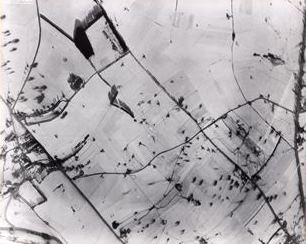
Courtesy National Archives /
NWWIIGPA Collection<
Aerial Photo of gliders in the snow covered fields
Photos of some of the men
from the 10 Glider mission:
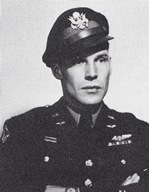
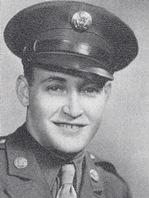
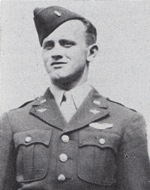
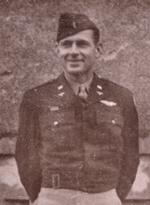

This is Chalk #3 flown by 2nd Lt. Morris Albert Gans, Chuck Berry’s glider #4 was next in line for take off.
Photos of some of the men
from the 50 Glider mission:
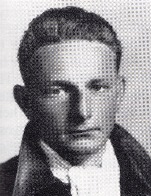
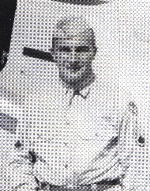
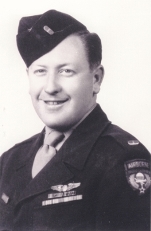
F/O Claude A. “Chuck”
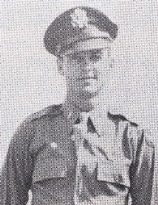
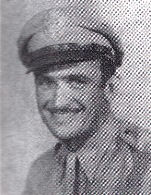
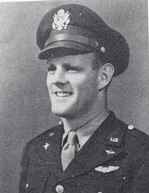

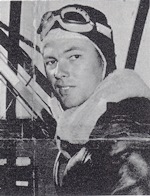
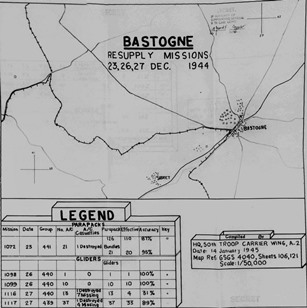
Chart covers 23, 26, and 27 December for the 50th WING only

